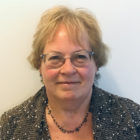 Dictionaries have been around a long time, perhaps beginning on cuneiform tablets around 2300 BCE (or BC if you prefer) in the area of modern-day Syria. In 1604, the first English alphabetical dictionary was published. Samuel Johnson’s much improved and more reliable English dictionary appeared in 1755. And, after 50 years of effort, in 1928, the Oxford English Dictionary (OED) was published.
Dictionaries have been around a long time, perhaps beginning on cuneiform tablets around 2300 BCE (or BC if you prefer) in the area of modern-day Syria. In 1604, the first English alphabetical dictionary was published. Samuel Johnson’s much improved and more reliable English dictionary appeared in 1755. And, after 50 years of effort, in 1928, the Oxford English Dictionary (OED) was published.
There is an interesting local side note to the OED. A major contributor to it was a mentally unstable U.S. army surgeon, imprisoned on a murder charge in London. His conviction did not halt him from volunteering to write entries for the OED, which he did for many years. He was deported back to the United States upon the order of Home Secretary Winston Churchill when his health deteriorated and his delusions increased. He eventually died in a Hartford asylum in 1920.
Today, the OED is updated and revised every three months and is considered the most trusted English language dictionary by almost everyone, except The New Yorker magazine. The New Yorker prefers Webster’s (considered by some to be the American OED conceived by Connecticut’s own Noah Webster). Early on, Webster was obsessed with spelling. As a schoolteacher, he was appalled by his student’s pronunciation and writing so he compiled a speller, his first attempt at standardizing the English language the American way. Thanks to him we write jail for goal, color for colour, and theater for theatre. Some of his reforms didn’t catch on, such as soop instead of soup, ake instead of ache, and medicin instead of medicine. Ironically, Webster finished his dictionary in England, feeling that he would have better success publishing it over there than in America.
After Webster’s death, George and Charles Merriam bought the copyright to Webster’s dictionary and hired Chauncey Goodrich, Webster’s son-in-law, to revise and update the dictionary. The Merriam brothers set up an office in Springfield. The dictionary is still published in Springfield today.
Mary Norris, the author of Between You & Me and The New Yorker magazine’s “comma queen” editor gave me the inspiration to write about dictionaries. She believes that every home should have a Merriam-Webster’s Collegiate Dictionary, no matter what edition. You might be able to find one at the Friends of the Kent Memorial Library book sale held in Father Ted’s Hall at the Sacred Heart Church on the same weekend as Suffield on the Green. The schedule for the sale is:
Friday, September 6
6–8 p.m.
($5 entry fee, Friends of KML free)
Saturday, September 7
9 a.m.–5 p.m.
Sunday, September 8
9 a.m.–5 p.m.
Half Price Day